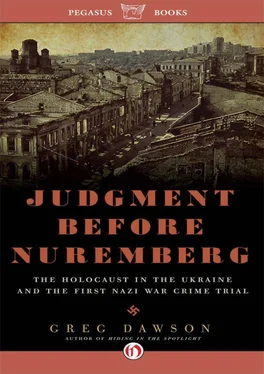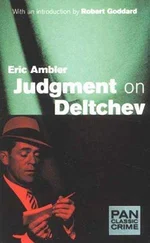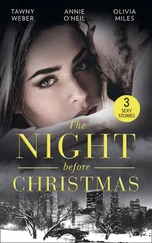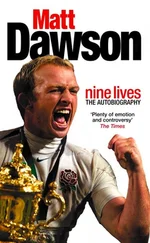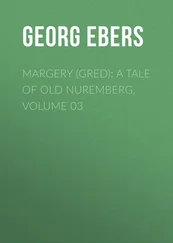Early in the war, Murrow had held Americans spellbound with his rooftop broadcasts from London during the blitz. In the ensuing years before the end of the war, the existence of Nazi death camps and Hitler’s attempt to exterminate all European Jews had been reported in thousands of newspaper stories in the U.S. Yet, almost like clockwork, as the war was ending, the myth of American innocence was born.
“The myth that we have nurtured in the intervening half-century—and that was fostered at the time—is that Americans, the ordinary man and woman on the street, first learned of the Final Solution in April and May 1945, when Fox-Movietone newsreels showed the walking skeletons and the bodies stacked like cordwood,” wrote Ron Hollander, a professor at Montclair State University, in his book We Knew: America’s Newspapers Report the Holocaust.
After studying newspaper stories from 1941 to 1945, Hollander concluded that “we knew. Not just in 1945 when we stumbled unpreparedly upon Dachau and Buchenwald while chasing the retreating Germans. But for at least the last three years of the war, while 3.5 million Jews were being murdered, we knew .”
Murrow must have known—how could he not?—but if so, by the end of the war he was either unconsciously repressing the information or conveniently “forgetting” it for dramatic purposes. Hollander wrote:
“Broadcasting for CBS from Buchenwald on April 15, 1945, Edward R. Murrow spoke as if he were breaking the news for the first time. ‘I pray you to believe what I have said about Buchenwald,’ Murrow begged his presumably skeptical audience. ‘Murder has been done at Buchenwald.’”
Emory University historian Deborah Lipstadt, who haunts Holocaust deniers the way Simon Wiesenthal hunted old Nazis, reinforced the point in Beyond Belief , her withering autopsy of American newspaper coverage of the Holocaust from dawn to dust, 1933 to 1945.
“Each time a report confirming some aspect of the Final Solution was released, the press treated it as if it were the first official confirmation. Previous reports and news stories were ignored,” Lipstadt wrote. “In December 1944, Newsweek claimed that the War Refugee Board’s description of Auschwitz constituted the ‘first time’ an American governmental agency had ‘officially backed up’ charges made by Europeans of mass murder. But the United States government had backed up the charges two years earlier in December 1942.”
To illustrate this curious and disturbing amnesia—a less polite but more honest term would be willful ignorance—Lipstadt quoted from a May 1945 editorial in the Chicago Herald American: “Last week Americans could no longer doubt stories of Nazi cruelty. For the first time there was irrefutable evidence as the advancing Allied armies captured camps filled with political prisoners and slave laborers, living and dead.”
Conspicuously missing from that passage is the word Jewish. To demonstrate the absurdity of omitting Jewish in this instance, imagine the omission of “slave” or “Negro” in a different historical context—the Civil War: “Last week Americans in the North could no longer doubt stories of Southern cruelty. For the first time there was irrefutable evidence as advancing Union armies entered plantations filled with political prisoners and forced laborers.”
Anyone can have an off day and simply forget, but it’s very likely that the editorial writer’s omitting “Jewish” was not just an oversight. The reluctance to identify the victims as Jews—especially on front pages—was one aspect of American newspapers’ dysfunctional coverage of the Holocaust and a major reason the coverage did not plant itself in the minds and consciences of readers.
Lipstadt cited the headline above an eight-line story on page one of the New York Journal American in June 1942 reporting a World Jewish Congress statement that “the Nazis have established a vast slaughterhouse for Jews” in Eastern Europe and a million Jews already had died as part of Hitler’s “proclaimed policy of exterminating the Jewish people.”
“JEWS LIST THEIR DEAD AT MILLION.”
“This was a Jewish story,’ Lipstadt dryly observed, “worthy of reporting, but not worthy of complete trust because Jews were ‘interested parties’.”
And not the most beloved minority in the land at the time. Newspapers historically have been more eager to pander than to lead, keeping a nervous finger on the pulse of the reading public, and in 1942 anti-Semitism in America was “slightly below the boiling point,” wrote sociologist David Riesman. In June 1944, with the U.S. fighting a two-front war in the Pacific and Europe, and the Final Solution no secret, a poll asked who represented the gravest threat to America. Six percent said Germans, 9% named the Japanese, and 24% unaccountably identified the Jews.
Studying those results, I was reminded of my favorite scene in the 1965 movie Ship of Fools, set on a German cruise ship in 1933, the year Hitler seized power. Jose Ferrer plays a character named Rieber who issues a constant stream of anti-Semitic remarks. After he concludes a diatribe blaming Jews for all of Germany’s woes, a Jewish traveler, Lowenthal, replies, “Well, yes. The Jews and the bicycle riders.” A puzzled Rieber replies, “Why the bicycle riders?” Lowenthal: “Why the Jews?”
The other major reason that stories about the Jews became a drop of blood in the ocean of war coverage was the hide-and-seek manner in which they were “played,” or presented, by editors. For readers, it was like receiving one piece every few days of a million-piece jigsaw puzzle of a picture they had never seen. Elie Wiesel has made the crucial distinction between “information”—sheer data—and “knowledge,” grasping the meaning and significance of data.
The most trenchant, slam-dunk riff I’ve seen on the failure of the press to transform information into knowledge came from Laurel Leff, a professor at the Northeastern School of Journalism, who did an exhaustive study of Holocaust coverage in the New York Times— more than a thousand stories between Germany’s invasion of Poland on Sept. 1, 1939 and May 31, 1945, three weeks after the war ended. In that period, the Holocaust—from early persecution to Final Solution—was never the lead story of the day, and made the front page only twenty-four times.
“You could have read the front page of the New York Times in 1939 and 1940 without knowing that millions of Jews were being sent to Poland, imprisoned in ghettos, and dying of disease and starvation by the tens of thousands,” Leff wrote. “You could have read the front page in 1941 without knowing that the Nazis were machine-gunning hundred of thousands of Jews in the Soviet Union.
“You could have read the front page in 1942 and not have known, until the last month, that the Germans were carrying out a plan to annihilate European Jewry. In 1943, you would have been told once that Jews from France, Belgium, and the Netherlands were being sent to slaughterhouses in Poland, and that more than half the Jews of Europe were dead, but only in the context of a single story on a rally by a Jewish group that devoted more space to who had spoken than to who had died.
“In 1944, you would have learned from the front page of the existence of horrible places such as Maidanek and Auschwitz, but only inside the paper could you find that the victims were Jews. In 1945, (liberated) Dachau and Buchenwald were on the front page, but the Jews were buried inside.” [1] Laurel Leff, “When the Facts Didn’t Speak for Themselves: The Holocaust in the New York Times, 1939–1945,” in Why Didn’t the Press Shout?, ed. Robert Moses Shapiro (KTAV Publishing House, 2003), 70.
Читать дальше
